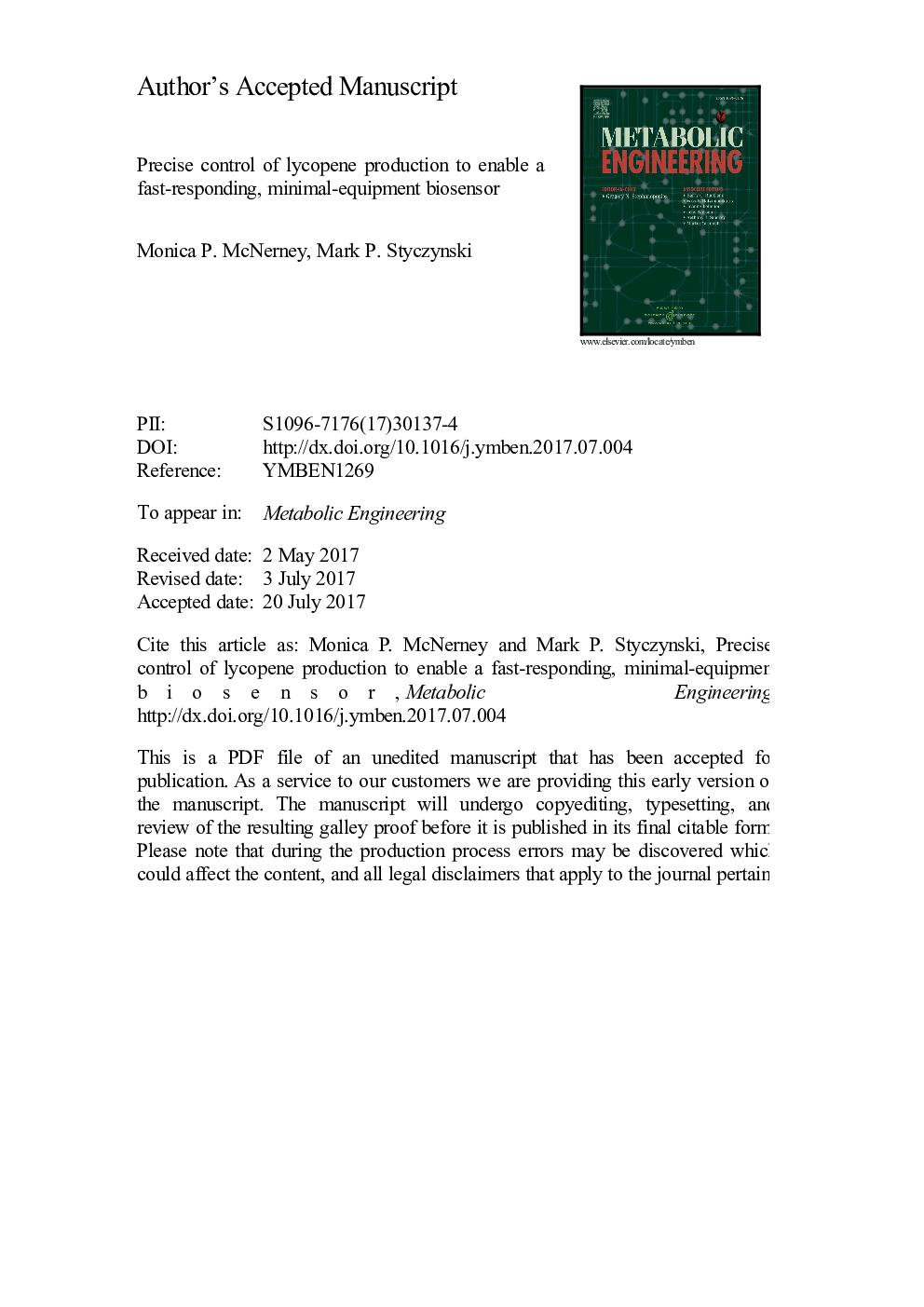| Article ID | Journal | Published Year | Pages | File Type |
|---|---|---|---|---|
| 4754781 | Metabolic Engineering | 2017 | 20 Pages |
Abstract
Pigmented metabolites have great potential for use in biosensors that target low-resource areas, since sensor output can be interpreted without any equipment. However, full repression of pigment production when undesired is challenging, as even small amounts of enzyme can catalyze the production of large, visible amounts of pigment. The red pigment lycopene could be particularly useful because of its position in the multi-pigment carotenoid pathway, but commonly used inducible promoter systems cannot repress lycopene production. In this paper, we designed a system that could fully repress lycopene production in the absence of an inducer and produce visible lycopene within two hours of induction. We engineered Lac, Ara, and T7 systems to be up to 10 times more repressible, but these improved systems could still not fully repress lycopene. Translational modifications proved much more effective in controlling lycopene. By decreasing the strength of the ribosomal binding sites on the crtEBI genes, we enabled full repression of lycopene and production of visible lycopene in 3-4Â h of induction. Finally, we added the mevalonate pathway enzymes to increase the rate of lycopene production upon induction and demonstrated that supplementation of metabolic precursors could decrease the time to coloration to about 1.5Â h. In total, this represents over an order of magnitude reduction in response time compared to the previously reported strategy. The approaches used here demonstrate the disconnect between fluorescent and metabolite reporters, help enable the use of lycopene as a reporter, and are likely generalizable to other systems that require precise control of metabolite production.
Related Topics
Physical Sciences and Engineering
Chemical Engineering
Bioengineering
Authors
Monica P. McNerney, Mark P. Styczynski,
